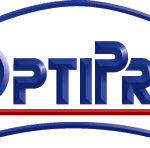“Turns out, pretty much everything we know in optics is out of the window.”
By Becky Ferreira
Original Article
One of the most basic properties of light is that it changes speed and direction in different substances, such as water or air. This process, known as refraction, explains why a glass prism splits light into many colors and why a pool may appear shallower than it really is when viewed from a deck or diving board.
Now, scientists have managed to defy this photonic principle with a special laser made of “spacetime wave packets” that do not slow down in denser materials, according to a recent study published in Nature Photonics. In fact, this new class of lasers can actually accelerate in a dense medium, among its many other optical superpowers.
Scientists led by Ayman Abouraddy, a professor of optics and photonics at the University of Central Florida, created these bizarre laser beams by linking their optical properties in both space and time, a tactic that unveiled “unexpected phenomena,” according to the study.
“What happens when you go into a laser beam and manipulate the space and time aspects and correlate them with each other; connect them with each other?” Abouraddy said in a call. “Turns out, pretty much everything we know in optics is out of the window.”
You might be scratching your head over what constitutes the spatial and temporal aspects of a laser beam in the first place, and why they are normally kept separated.
A laser’s spatial properties typically refer to the beam’s appearance in space, such as its size and shape. Its temporal properties relate to values such as the duration of its pulses, which are often incredibly fast bursts measured in nanoseconds (one nanosecond is equal to a billionth of a second).
“All laser beams produce light in which those two aspects are independent of each other,” explained Abouraddy. “Sometimes, they do get coupled but it is considered a nuisance that messes up the beam so you try to avoid it.”
“Our work, in general, on this topic that we’re calling spacetime wave packets is to look at the consequences of intelligently and purposefully going into an optical pulse and connecting the spatial aspect with the temporal aspect,” he continued.
For instance, one of the most important ways of understanding the spatial properties of lasers is to consider their configuration in terms of plane waves, which are the dependable building blocks of light. Manipulating a laser so that specific plane waves are paired with temporal aspects related to the pulse duration, such as the colors of the light, is one way to couple the two domains.
“Such beams cannot be produced by today’s lasers so what we do is take a generic laser beam then we go in and engineer its internal structure to satisfy this type of requirement,” Abouraddy said.
Abouraddy and his colleagues have found that very strange things occur when you start tinkering with spacetime wave packets. In the new paper, they describe how these special beams take on otherworldly properties when introduced to different substances.
“When you go from a rarified medium, like a gas like air, to a solid or more condensed medium like glass or water, light always slows down,” Abouraddy said. “We find that we can overcome this. We can create our laser pulses such that they speed up in a more solid medium rather than slow down. That’s what we call anomalous refraction.”
As you might imagine, the exotic abilities of spacetime wave packets could have a huge range of applications for laser technologies as well as communications systems. For example, the beam’s ability to travel through water at any speed, with the right calibration, means that a synchronizing signal could reach submarine stations deployed at completely different locations at the exact same time.
Such trippy results may appear to be overturning established laws of physics, but the mechanisms governing the beams do not clash with fundamental optical principles, Abouraddy said. This is because the anomalous refraction effect only affects the “group velocity” of the beam, which means the speed at the peak of the pulse, which is different from the speed of the underlying oscillation of the waves themselves.
The beams produced by spacetime wave packets are not yet scalable to normal laser platforms, but the team is currently working on cracking that particular optical nut.
To that end, these weird lasers have attracted a lot of interest and support. Abouraddy recently received the Newton Award for Transformative Ideas during the COVID-19 Pandemic from the U.S. Department of Defense (DoD), and the team is also funded by a DoD multidisciplinary university research initiative.














